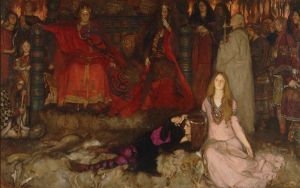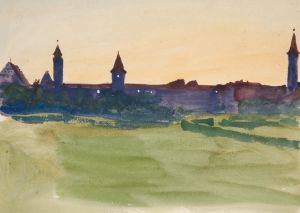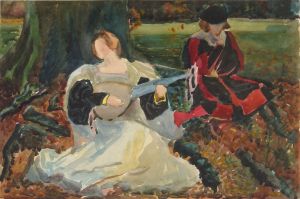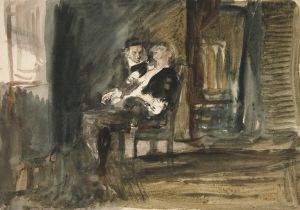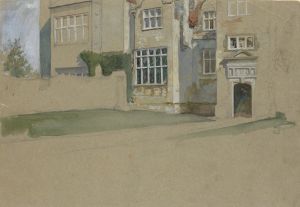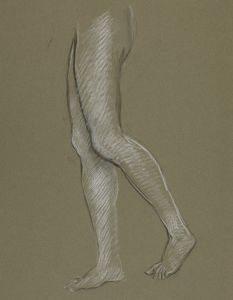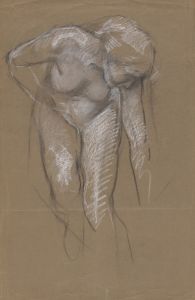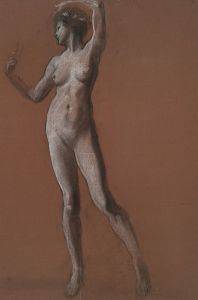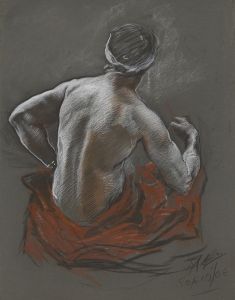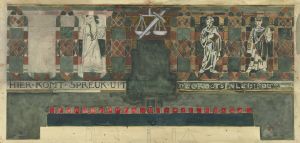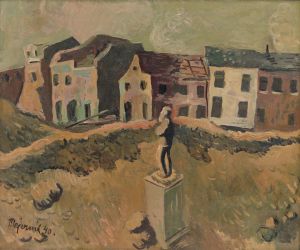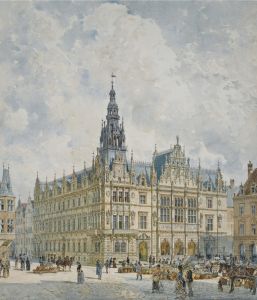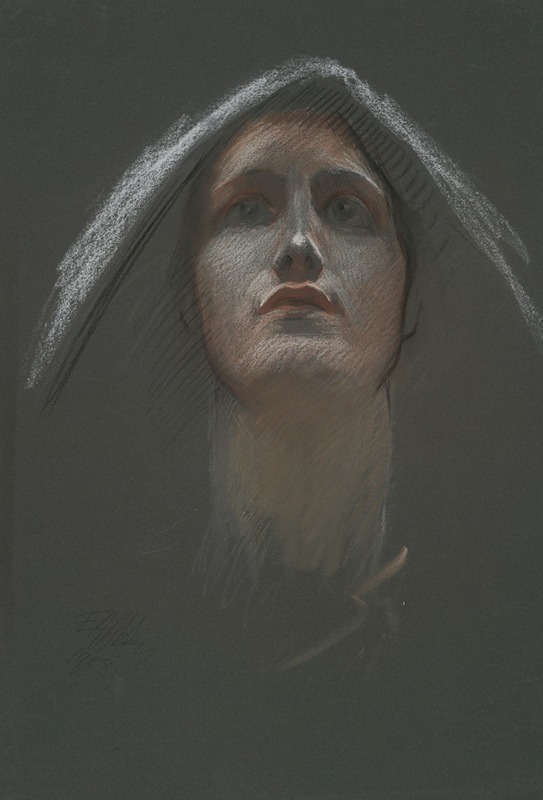
Study for figure of Religion rondel in the rotunda of the state capitol building in Harrisburg, Pennsylvania, 1902-1911
A hand-painted replica of Edwin Austin Abbey’s masterpiece Study for figure of Religion rondel in the rotunda of the state capitol building in Harrisburg, Pennsylvania, 1902-1911, meticulously crafted by professional artists to capture the true essence of the original. Each piece is created with museum-quality canvas and rare mineral pigments, carefully painted by experienced artists with delicate brushstrokes and rich, layered colors to perfectly recreate the texture of the original artwork. Unlike machine-printed reproductions, this hand-painted version brings the painting to life, infused with the artist’s emotions and skill in every stroke. Whether for personal collection or home decoration, it instantly elevates the artistic atmosphere of any space.
Edwin Austin Abbey's Study for Figure of Religion is a preparatory work created between 1902 and 1911 for the mural program in the rotunda of the Pennsylvania State Capitol in Harrisburg. Abbey, an American painter and illustrator renowned for his historical and literary themes, was commissioned to design and execute a series of murals for the Capitol building, which was completed in 1906. His work in the rotunda is part of a larger decorative scheme that reflects Pennsylvania's history, culture, and ideals.
The Study for Figure of Religion is one of several studies Abbey produced as part of his meticulous preparation for the final murals. This particular study focuses on the allegorical representation of "Religion," a central theme in the rotunda's iconography. Abbey's approach to the figure reflects his academic training and his ability to convey complex ideas through symbolic imagery. The study demonstrates his skill in draftsmanship and his use of light and shadow to create a sense of depth and form.
The final murals in the rotunda, including the figure of Religion, are executed in oil on canvas and were installed in situ. They are part of a series of rondels that depict allegorical figures representing various virtues and ideals, such as Justice, Science, and Art. These works collectively underscore the moral and intellectual foundations of governance and society as envisioned during the early 20th century.
Abbey's contributions to the Pennsylvania State Capitol are considered among his most significant achievements. However, he was unable to see the completion of the project, as he passed away in 1911. The murals were completed posthumously under the supervision of his assistants and collaborators.
The Study for Figure of Religion is valued not only as a preparatory work but also as a standalone example of Abbey's artistic process and vision. It provides insight into his methods and the evolution of his ideas for the Capitol murals. Today, the study, along with other preparatory works by Abbey, is appreciated for its historical and artistic significance, offering a glimpse into the creative process behind one of the most ambitious public art projects of its time.






